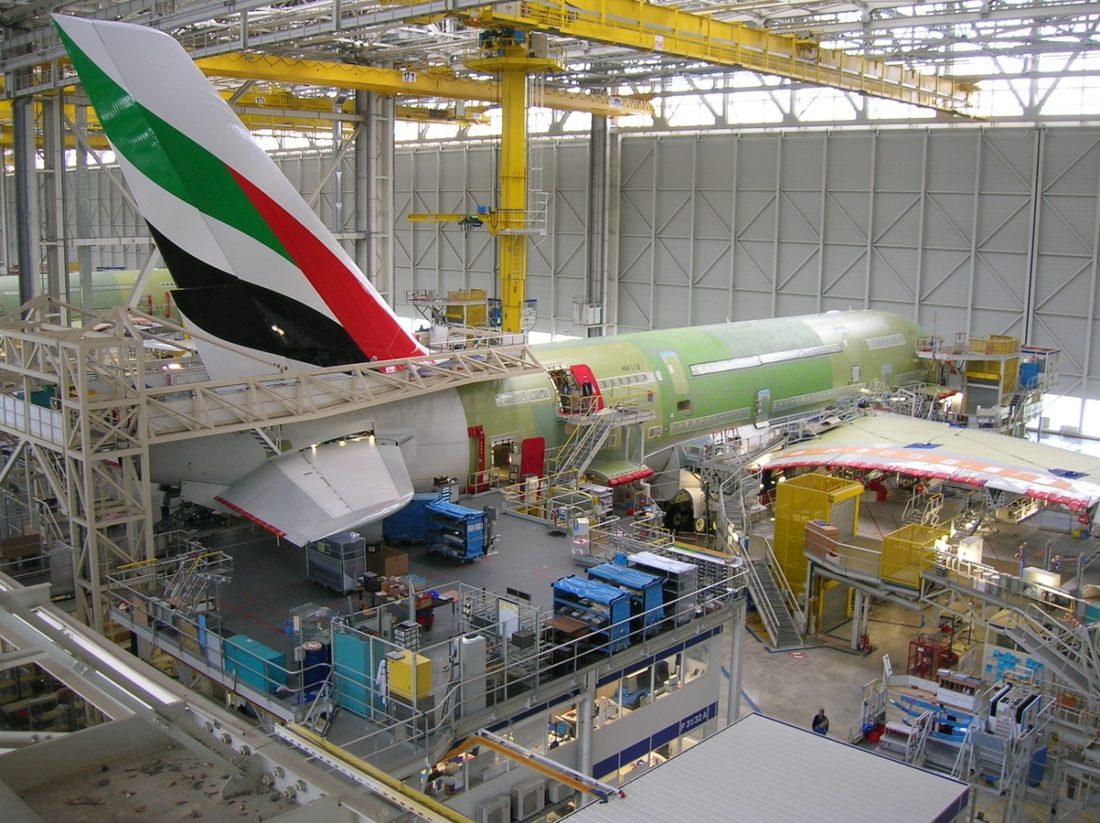Three Best Practices for Aerospace Manufacturing

The responsibility shouldered by aerospace manufacturers is weighty indeed. Its products carry satellites into space, people across oceans and between hospitals, drones safely to their targets.
It’s a marvel of science and quality control that the industry is able to do this so consistently. Ancient or medieval peoples would have called it sorcery. Da Vinci and his Renaissance contemporaries might approve, and they would still be impressed.
Those miracles of science and technology don’t just happen, though. To make such complex and reliable machines requires rigorous adherence to a series of best practices. This applies not only to the aerospace industry itself, but also its vendors, suppliers, and subcontractors, some of which don’t have to follow the same best practices in their work for other industries.
“Best Practices” is a bigger concept than just maybe-sort-of trying to do a good job. They are techniques that get adopted by whole industries because rigorous trial and error have proven them to produce superior results. You can see why people would want that in their airplanes, helicopters, and expensive RC drones.
The details of best practices vary by manufacturer, but we can draw some broad areas to keep an eye on. Here are three best practices that aerospace manufacturers need to be aware of and implement.
Identify and Rectify Inefficiencies
Aerospace manufacturing is complex, requiring numerous processes carried out by automation and personnel across massive facilities. No one person or team can keep a watchful eye on all of it. And if an inefficiency develops, it ripples throughout the operation, resulting in costly delays, shutdown, and faulty products.
One of the technologies aerospace companies can implement to track processes for inefficiencies is a real-time locating system (RTLS). A RTLS is like a GPS tracker, but limited to a facility and using different technology. The first RTLS systems used Active RFID (radio frequency identification) tags or infrared light detectors to map the position of objects and personnel throughout a large facility. Modern RTLS can utilize W-LAN WiFi, Bluetooth, or Ultra Wideband (UWB) transmission.
A precise RTLS system can identify idle components, bottlenecks, and workflow inefficiencies that can then be targeted for troubleshooting and fixing. In an industry like aerospace, correcting inefficiencies can mean millions of dollars in recaptured revenue.
Constantly Refine Your Employee Training
A study performed by Washington State, the US state with the highest concentration of aerospace employment, discovered that every $1 invested in aerospace training netted the state $15 in return on investment. Meanwhile, the Aerospace Industries Association anticipates a gap in the STEM education of up-and-comers in the workforce who will replace a retiring old guard. A well-trained workforce makes all the difference in aerospace success—not decades from now, but soon.
Aerospace employee training is not a process you can set and forget. It requires constant improving, updating, and streamlining to speed up new-hire onboarding and to expand the skill base of current employees.
Here are some tips to apply when refining employee training:
- Ask Your Employees. They often have a better sense of their own blind spots than you do and will be grateful for the input in how they can grow in their jobs and improve the workforce.
- Provide Mentoring and Hands-On Coaching. The best teachers are experienced people who have already done the thing to be taught, and the best way to learn is by doing.
- Invest in Digital Education. Digital, customizable training software or SaaS can fill in the gaps of classroom learning whenever mentorship or hands-on coaching is not practical. Choose a training program that will not only enshrine your training materials into institutional memory, but that can grow and adapt with your organization’s training needs.
Investing in employee training offers some of the best ROI to be had in the aerospace industry. Constantly refining the training process is a key best practice for any aerospace manufacturing firm to master.
Adhere Rigorously to Quality Management Standards
When operating in a heavily regulated industry with lives depending on faultless operation, quality management is not optional. When it comes to quality management standards, you need to understand three interrelated concepts:
- Quality Control (QC). The act of finding, troubleshooting, and eliminating impediments to quality production.
- Quality Management System (QMS). A system or systems by which an organization executes quality control.
- Quality Assurance (QA). Proof of strong QC/QMS that can be submitted to a regulatory body or used to generate customer confidence in a manufacturer’s products.
The gold standard of aerospace QA is AS9100, itself an update of AS9000 which was adapted from ISO 9001, a quality control standard created by the International Organization for Standardization. The most recent update to the standard is “Amendment D,” so you will often see the standard referred to as AS9100D.
AS9100 applies specifically to the aerospace industry and was designed to conform to the regulatory requirements of NASA, the US Federal Aviation Authority, and the US Department of Defense.
In addition to its US origins, nearly every other country has adopted AS9100 as the standard of QA for the aerospace industry. According to this article from Dickson, companies working in the aerospace industry generally need to document AS9100 compliance.
What does AS9100 compliance involve? Getting certified as AS9100 is a complex process with rigorous standards to meet that involve:
- Design and Development. Planning, inputs, outputs, review, verification, validation, and other controls on project design and development.
- Selection and management of suppliers, purchasing requirements, verification and validation of goods purchased.
- Risk Management. Assigning responsibilities, defining risk-management criteria, identifying and communicating risk, implementing risk mitigation actions, accepting the risk that remains.
- Maintaining configuration, identifying status, defining acceptance media, and establishing standards for identification and traceability of actions.
This is just a partial list to describe an intensive process. Many aerospace companies choose to outsource the complex process for AS9100D certification to a reliable third-party compliance team to make sure it is done correctly.
—————————————————————————————
By implementing best practices of manufacturing, including those generic to the manufacturing industry as a whole and specific to their sector, aerospace manufacturers can position themselves to profit handsomely in an industry defined by innovation on the cutting edge of human experience.









